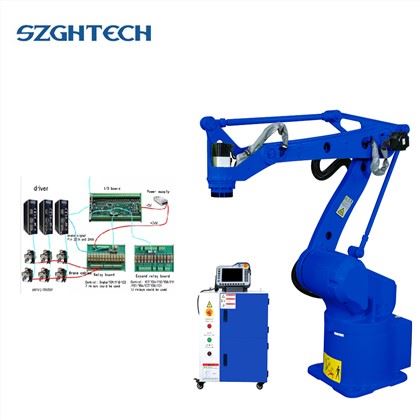| Model NO. | SZGH-B1850-D-4 |
Payload | 20kg |
Reach | 1850mm |
| Structure | Articulated |
Axes | 4 |
| Weight | 230kg |
Application | Materials handling, parts transfer, palletizing, deburring &cutting |
Special Service | 1. We can customize the standard color as you need! |
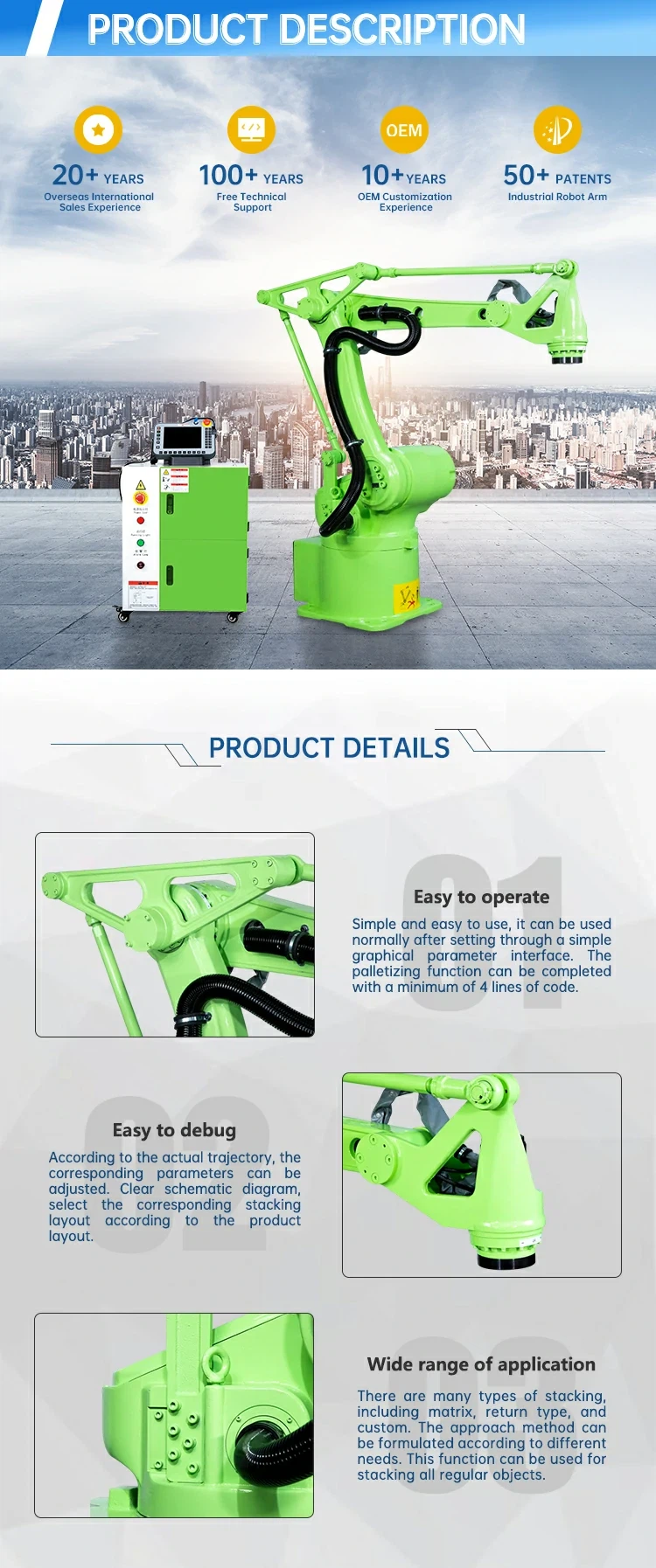
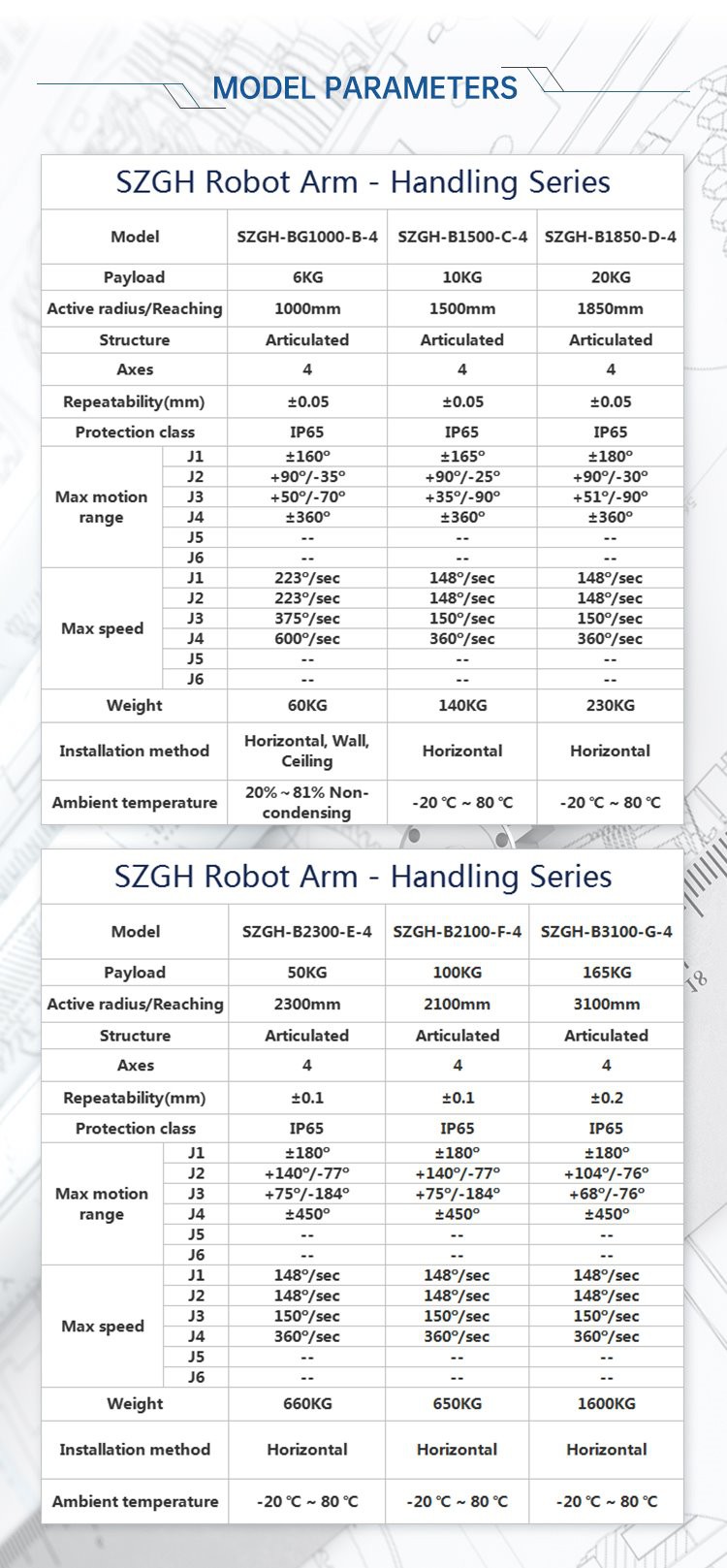
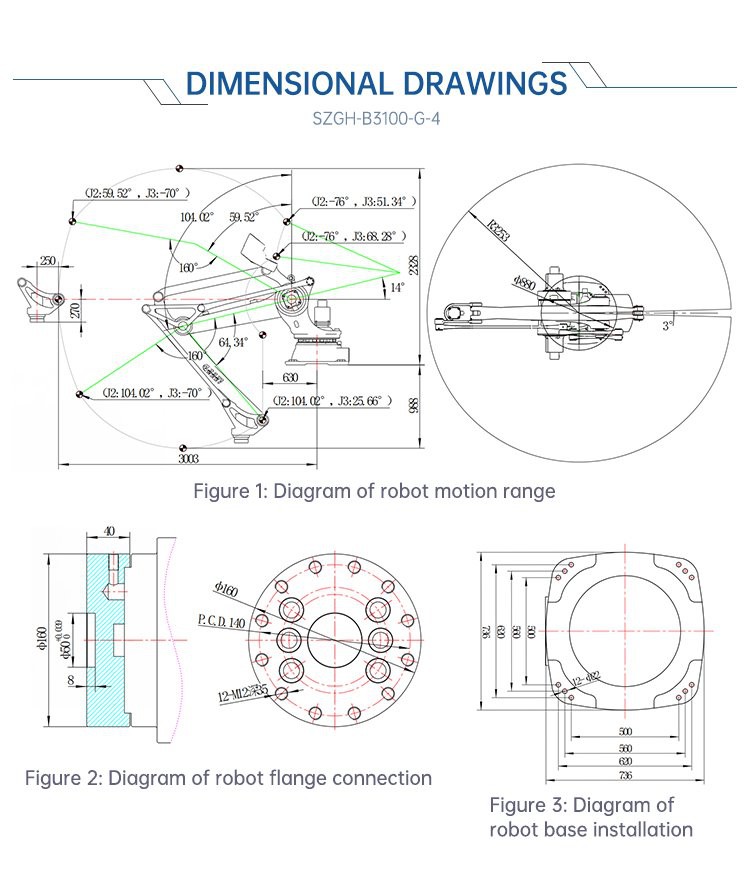
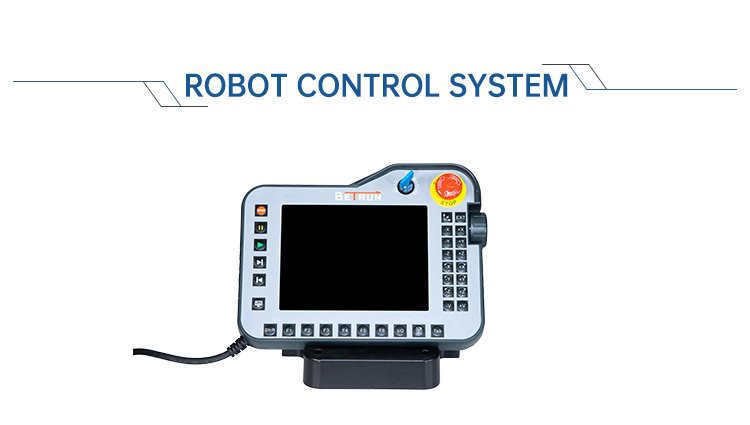
Robot controller systems:
1) Structural optimization algorithm suitable for the body control of various types of structure.
2) Software PLC functions facilitate logic control.
Process functions make programming easy.
3) Safety module ensures safe production of the robots.
Industrial standards &reliable stability.
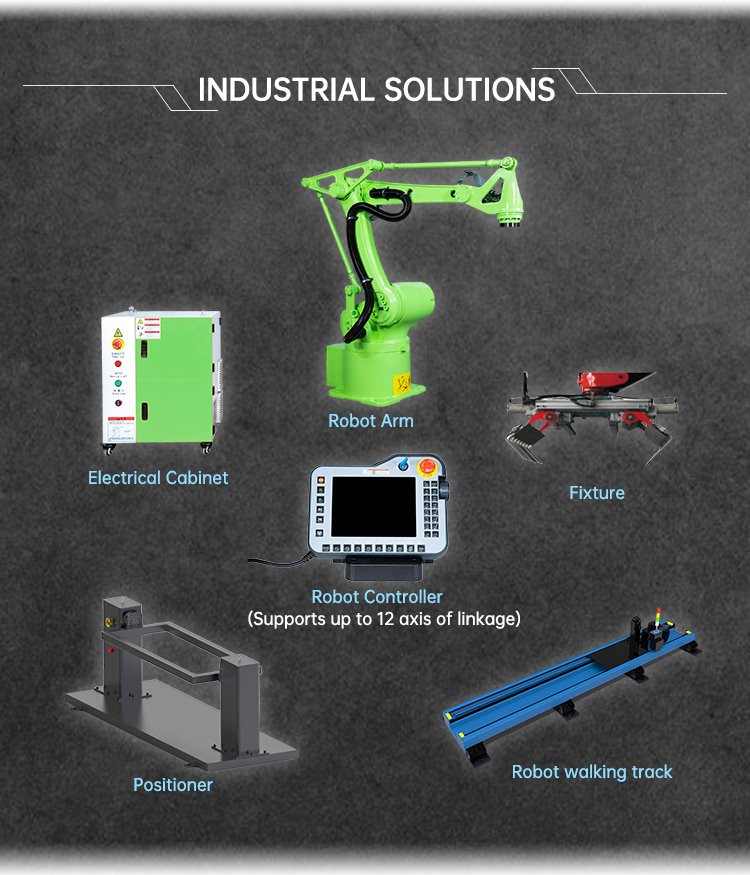
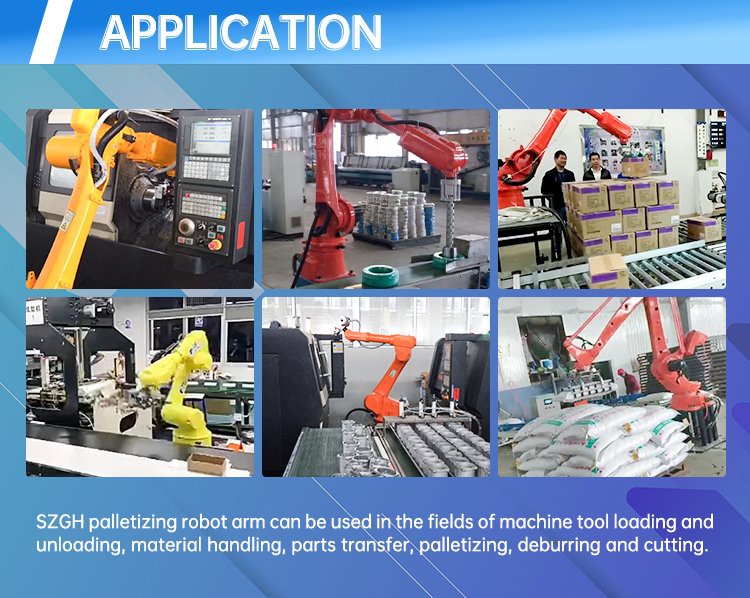
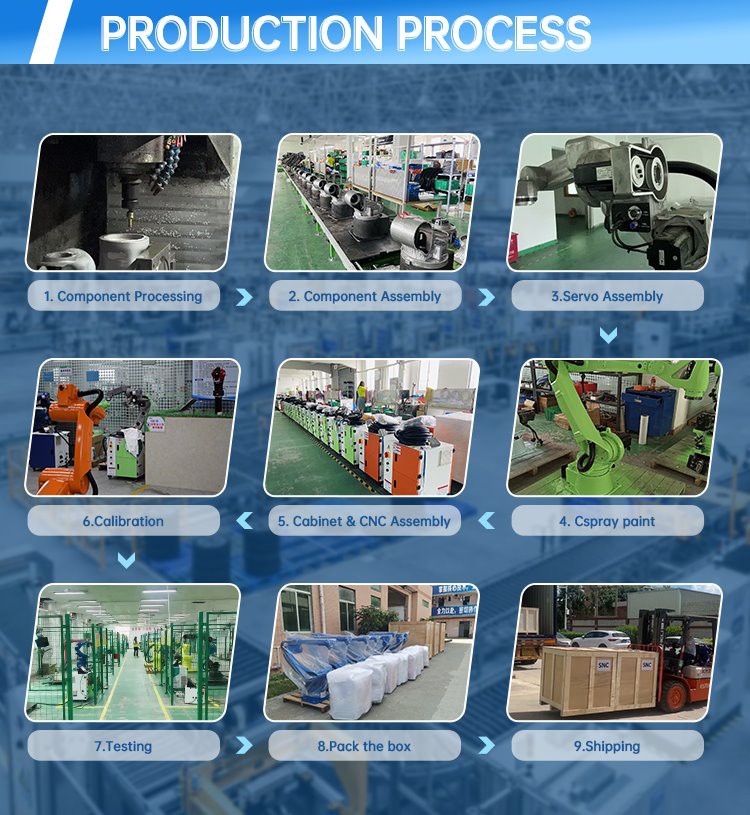
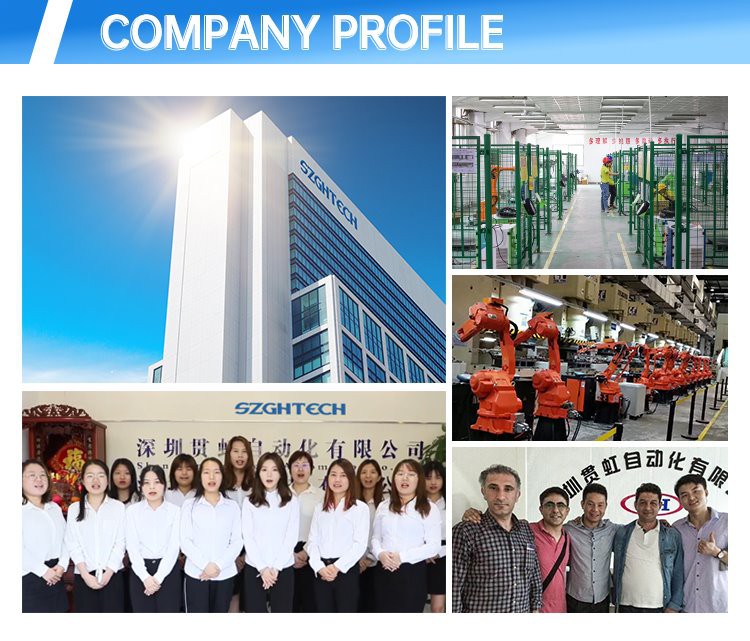
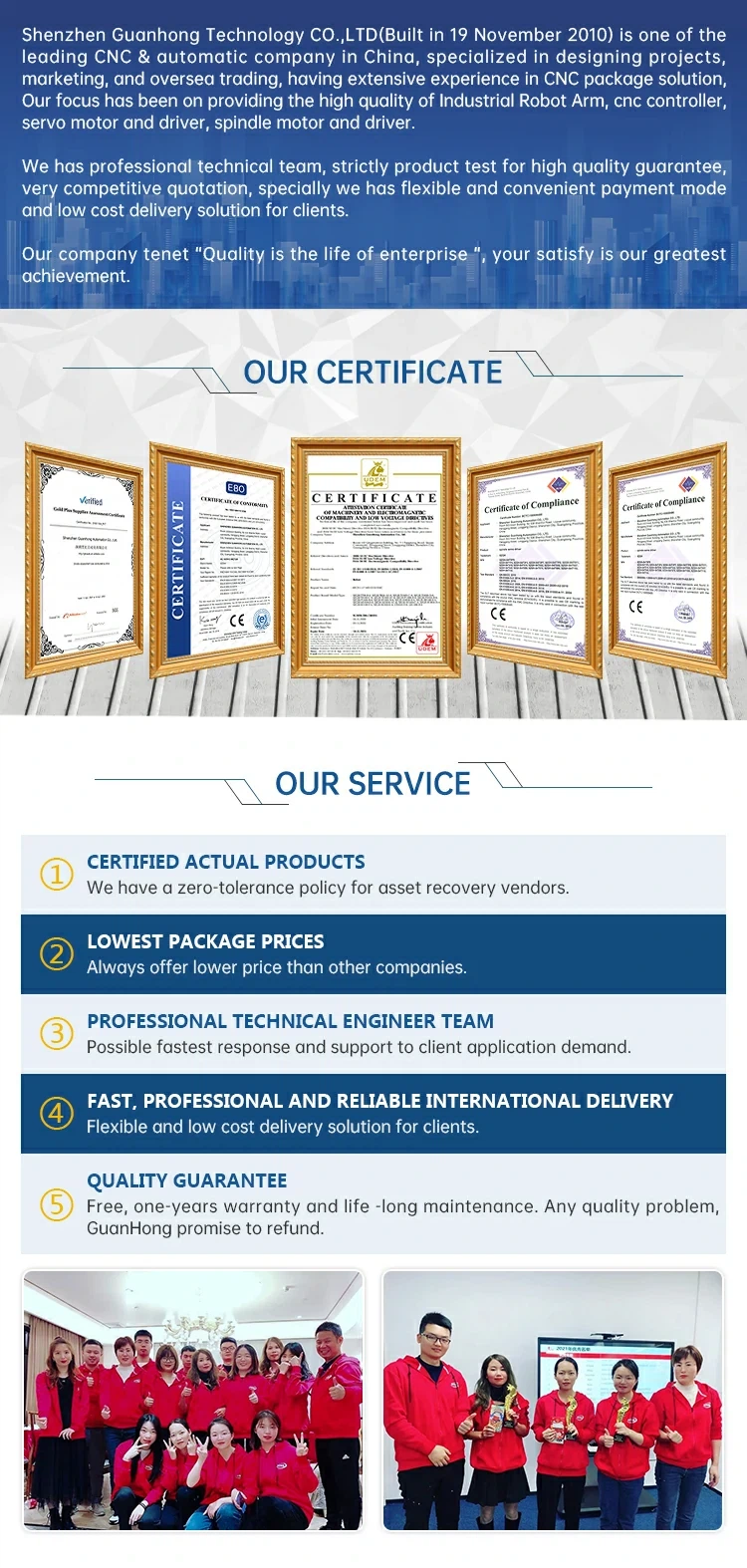
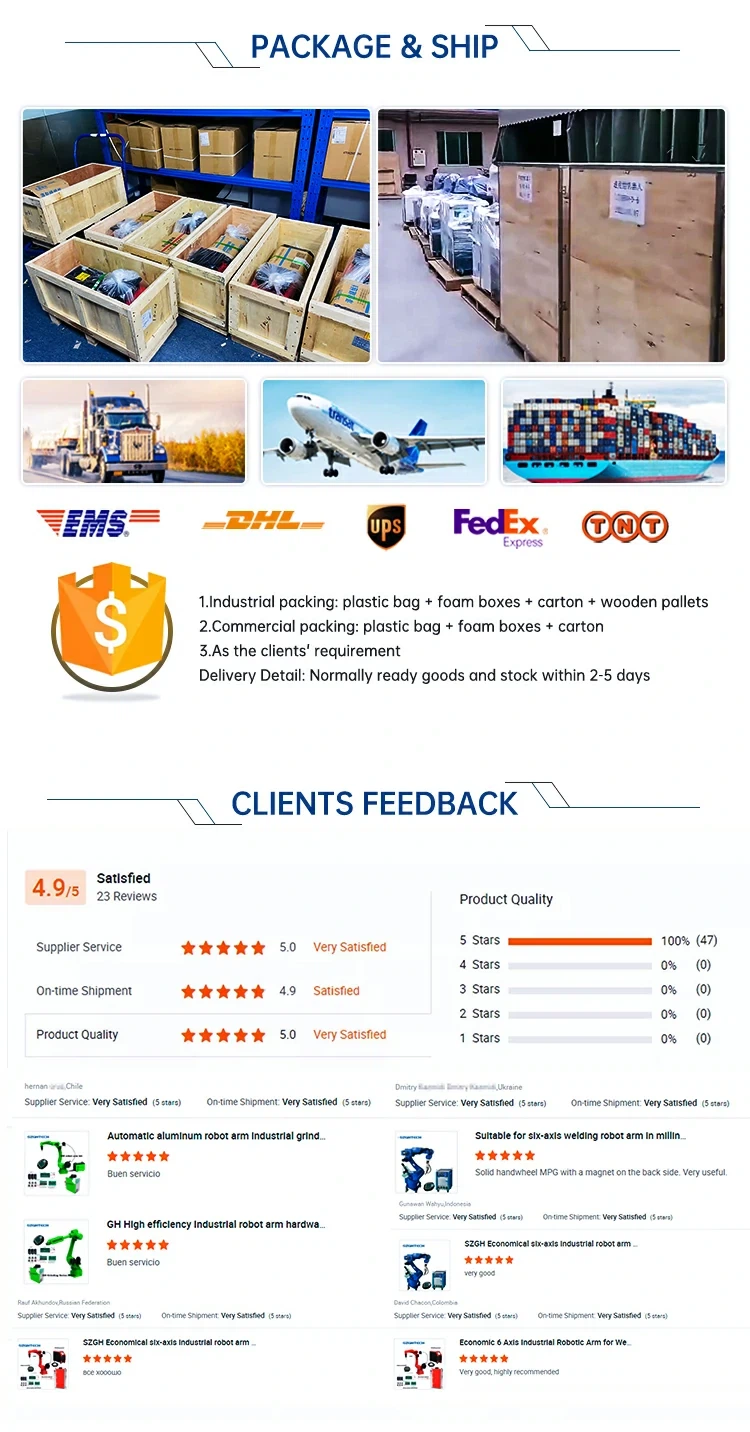
FAQ
A: Our warranty has been upgraded from 12 months to 14 months and the quality of our machines is very stable.
Q: What control system does your robot use?
A: The control system of our robots is self-developed, 75% similar to kuka, fully functional and easy to learn. Customers can learn our control system within 3 working days.
Q: Can you teach us how to use the machine?
A: Yes, we will send you guiding vedio. If you still don't konw how to use it, we can talk by phone, whatsapp, email or skype.
If you have any questions, please feel free to contact us.


